
A bright day with the antenna facing away and a beautiful blue sky with clouds.
A bit of sunshine between the rain while #DSS43 is communicating with @NASAVoyager 2.
🌏📡〰️〰️〰️〰️〰️〰️<|)[]
@canberradsn.bsky.social
Part of NASA's Deep Space Network , providing two-way contact with dozens of robotic spacecraft exploring the Solar System and beyond. All skeets are our own and not those of NASA, JPL or CSIRO.

A bright day with the antenna facing away and a beautiful blue sky with clouds.
A bit of sunshine between the rain while #DSS43 is communicating with @NASAVoyager 2.
🌏📡〰️〰️〰️〰️〰️〰️<|)[]

The view is from the ground of 7 people in business clothes holding shovels that are dug into the ground. The photo is black and white and shows part of an antenna in the background.
We’ve broken ground for a new antenna.
New antenna = new hashtag! #DSS33 📡
Find out more go.nasa.gov/3Yr5Y19
L to R: Elanor Huntington (CSIRO), Dave Gallagher (JPL), Erika Olson (US Charge d’Affaire), Kevin Coggins (NASA SCaN), Kevin Ferguson (CSIRO/CDSCC), Greg Heckler (NASA SCaN), Suzy Dodd (JPL)
Due to unforeseen circumstances, unfortunately our visitor centre will be closed on Saturday 8th, Sunday 9th, and Monday 10th of March. We apologise for the inconvenience.
We will reopen again on the weekend of the 15th and 16th March for our regular hours (10 am – 4 pm, Saturday and Sunday).
Perfectly said.🪐🥹🚀📡🛰️
08.02.2025 06:53 — 👍 1 🔁 0 💬 0 📌 0Hi Bluesky!
Deep Space Station 43, the largest steerable,parabolic antenna dish in the southern hemisphere.
#nasa #space #science #jpl #photography #exploration #dss43 #communication #communication #canberra #antenna #sun

People exploring a space museum exhibition.
Thanks to the 1000s of people who came along to visit us over the holidays.
From February 1st, our Visitor Centre will be open to the public on Saturdays and Sundays only, 10am to 4pm.
Our opening hours will change during the year to meet demand. More: go.nasa.gov/3WzrNvc

Mike Dinn (front) and John Saxon sitting at the control console at the Honeysuckle Creek Tracking Station during the Apollo lunar program in the late 1960s.
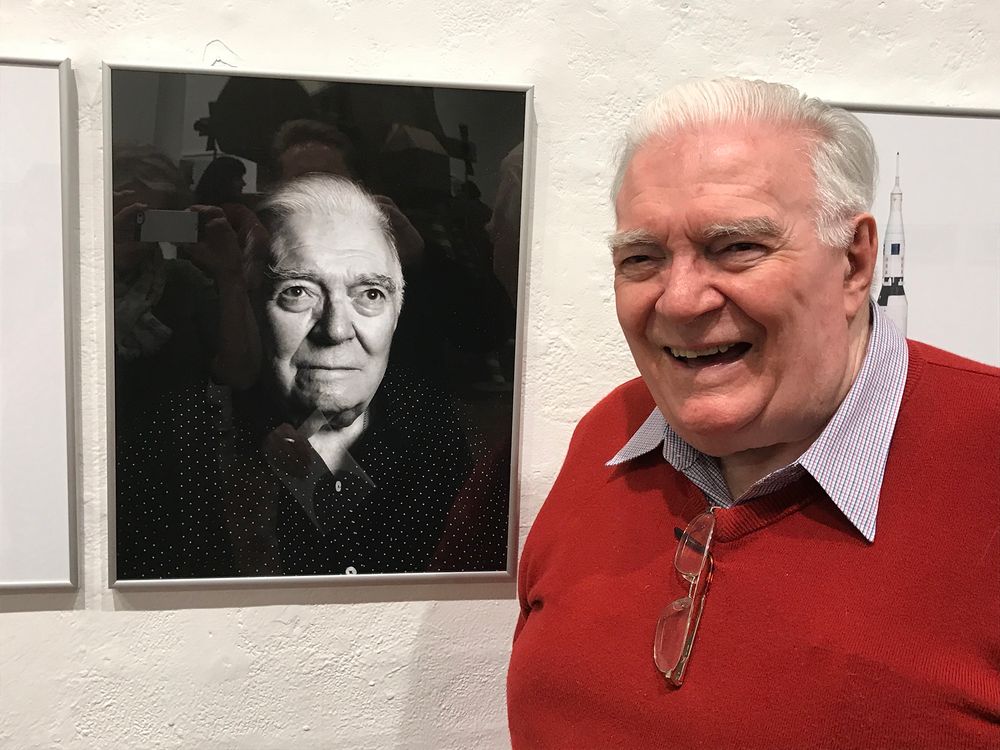
Mike Dinn poses in front of a black and white portrait photo of himself.

John Saxon poses in front of a black and white portrait photo of himself.
Congratulations to our honoured alumni - Mike Dinn and John Saxon each receiving the Medal of the Order of Australia for their respective services to engineering, science, deep space tracking and exploration. 🇦🇺🎖️
They worked side-by-side at the Honeysuckle Creek and Tidbinbilla tracking stations.

High cirrus clouds produce a Sun ring appearing above a deep space antenna dish.
🎶’If you liked it then you shoulda put a ring on it’🎵
A Sun-ring is caused by sunlight refracting through ice crystals in high, thin cirrus clouds.
A beautiful phenomenon above our 70-metre antenna dish, Deep Space Station 43.📡
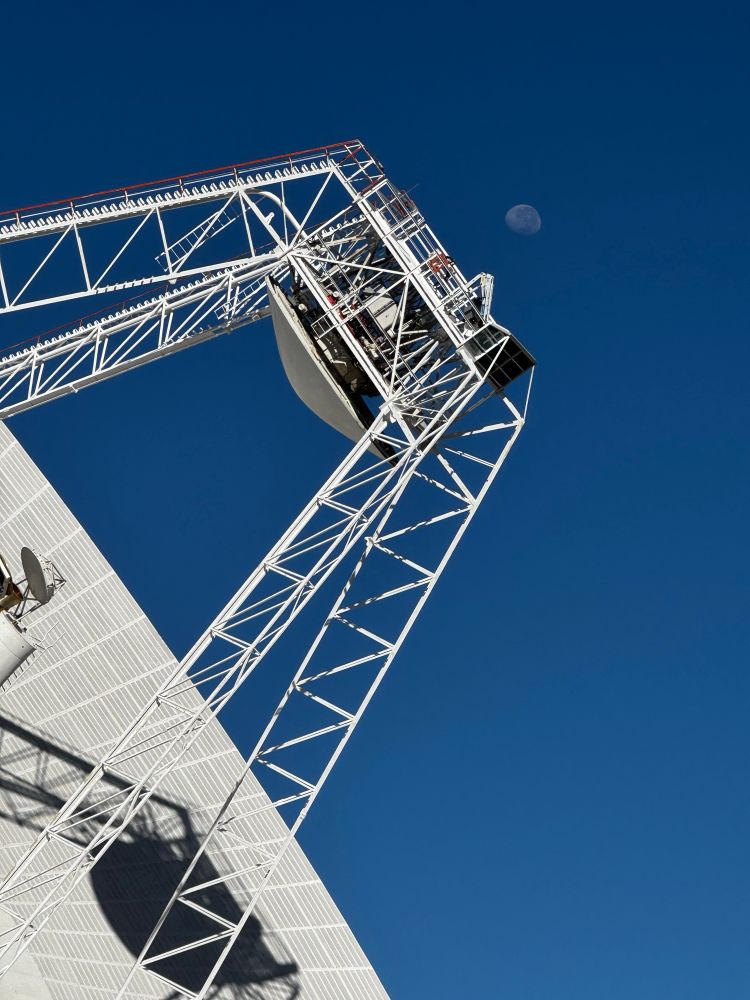
Daytime image of the Moon above the metal structure of a deep space communications antenna dish.
Destination Moon 🌖
22.01.2025 22:00 — 👍 52 🔁 3 💬 0 📌 0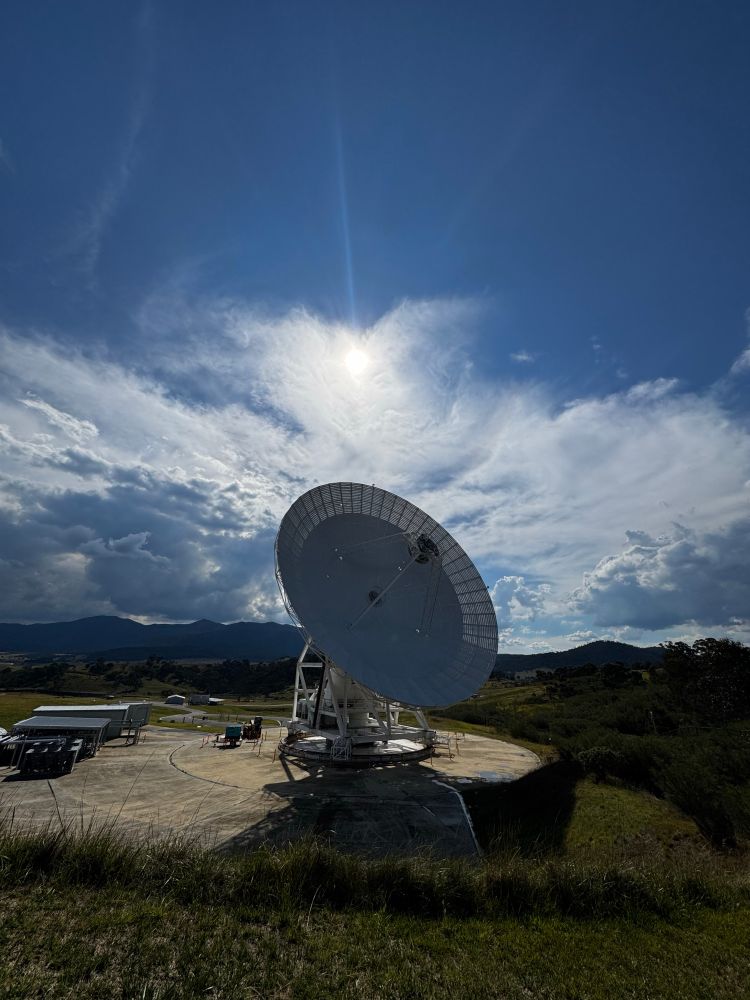
Sun shining through clouds in a blue sky above a mountainous region with a deep space antenna in the foreground.

Sun shining through clouds in a blue sky above a mountainous region with a deep space antenna in the foreground.
Deep Space Station 35 getting some warmth in the afternoon Sun after a rainy few days.📡🌧️#DSS35
13.01.2025 04:38 — 👍 67 🔁 10 💬 1 📌 0
Giant deep space antenna dish set against green hills and blue cloudy sky.
“Having fun, Voyager 1?”📡
Deep Space Station 43 #DSS43 is communicating with humanity’s most distant spacecraft, @NASAVoyager 1 24.9 billion kilometres from Earth, in interstellar space.
🌏📡〰️〰️〰️〰️〰️〰️<|)[]
Success confirmed after ‘Beacon Tone #1’ was received by antenna Deep Space Station 34 from the #ParkerSolarProbe. @NASAScienceAA @NASASun @JHUAPL Proud to be a part of the team!📡
.
.
#nasa #space #science #jpl #photography #exploration #communication #canberra #antenna

A 34-metre diameter antenna dish, Deep Space Station 34 points skyward, toward a blazing Sun in a clear blue sky. The antenna is receiving signals from the Parker Solar Probe after its successful closest approach encounter flyby of the Sun on the 24th December 2024.
Deep Space Station 34 received a clear beacon tone from the #ParkerSolarProbe after its close encounter with the Sun on 24th December.📡🛰️☀️
Congratulations to the mission science team & engineers @jhuapl and @NASA on this historic achievement. #DSS34
blogs.nasa.gov/parkersolarpro…


Who is the fastest on Christmas Eve?
#ParkerSolarProbe vs #SantaClaus
🛰️ = 692,000 kilometres/hour
🎅 = 3,765,852 kph ✅🥇

The Sun shines against a blue and cloudy sky, above a giant antenna dish - Deep Space Station 43, in Canberra, Australia. A part of NASA’s deep Space Network.
The #ParkerSolarProbe is just hours away from its close encounter with the Sun.📡〰️〰️〰️🛰️🔜☀️
Just 6.1 million kilometres from the Sun’s surface, travelling at 692,000 kilometres per hour, it’s going to be an amazing ride as it races around our star. See you on the other side!
Here comes the Sun - On the 24th December 2024, at 11:53 GMT (10:53pm AEDT) (6:53am ET), NASA’s Parker Solar Probe will fly 6.1 million kilometres above the Sun’s surface, travelling at 692,000km/hr.
Follow its journey at: science.nasa.gov/mission/parker-solar-probe
Tracking Lucy in the Sky through Canberra.📡🛰️
On its recent Earth Gravity Assist flyby, antenna Deep Space Station 36 in Canberra, Australia provided communications for the spacecraft.

President of the Czech Republic, Petr Pavel and CanberraDSN Director, Kevin Ferguson, in front of a Deep Space Network sign.

Standing in front of a 34-metre antenna dish - Deep Space Station 36 - are (left to right), Australian Ambassador to the Czech Republic, Benjamin Hayes, First Lady of the Czech Republic, Eva Pavlová, President of the Czech Republic, Petr Pavel, Canberra Deep Space Communication Complex Director, Kevin Ferguson, and the Ambassador of the Czech Republic to Australia, Jana Tyrer.

President of the Czech Republic, Petr Pavel shakes hands with Canberra Deep Space Communication Complex Director, Kevin Ferguson. Several deep space antenna dishes are in the background.
An honour to host a visit by the President of the Czech Republic, Petr Pavel and First Lady, Eva Pavlová, accompanied by Ambassadors 🇨🇿Jana Tyrer and 🇦🇺Benjamin Hayes. The Czech Republic is a member of the Artemis Accords on the civil and peaceful exploration of space.
28.11.2024 21:44 — 👍 21 🔁 2 💬 0 📌 1
People in a colourful space exhibition with planets and spacecraft.
GOOD NEWS!
Our visitor centre will be reopening to the public from 3rd December. We will be open Tuesday to Sunday, 10am to 4pm. Entry is free. No need to book.
Please note that the Cafe & giftshop will not be open.
More details here: go.nasa.gov/3WzrNvc

A juvenile Nankeen Kestrels looking directly at the camera. Fluffy white chest feathers, brown speckled wings and head, with sharp raptor beak and talons. The bird is sitting on a metal railing with cracking yellow paint.

A juvenile Nankeen Kestrels looking into the distance. Fluffy white chest feathers, brown speckled wings and head, with sharp raptor beak and talons. The bird is sitting on a metal railing with cracking yellow paint.

A juvenile Nankeen Kestrels looking to the side. Fluffy white chest feathers, brown speckled wings and head, with sharp raptor beak and talons. The bird is sitting on a metal railing with cracking yellow paint.

Its wings spread wide and it launches itself into flight, an adult Nankeen Kestrels carries a lizard in its beak. White chest feathers, brown speckled wings and head, with sharp raptor beak and talons. In the background there is a metal structure.
One of our antenna dishes is hosting two juvenile #NankeenKestrels, with parents bringing lots of tasty treats. 🥰 #SpaceMenagerie
15.11.2024 14:21 — 👍 36 🔁 3 💬 2 📌 0
An evening sky with hues of purple and blue, appears above three deep space antenna dishes. Each antenna is bathed in lights from white to yellow and orange colours. From left to right - Deep Space Stations 36, 34 and 35.
Targeting a launch at 3:12am AEDT, @NASA’s @EuropaClipper mission will start its 2.9 billion kilometre voyage to Jupiter’s icy moon Europa.
Antennas Deep Space Stations 34 & 36 are set to make first contact with the spacecraft after separation from @SpaceX’s Falcon Heavy rocket.

Panoramic view of deep space antenna dishes pointing skyward. Hills and setting sun in a cloudy blue sky. Deep Space Station 43 on left in contact with NASA’s Voyager 1 spacecraft, and on the far right, antenna dishes Deep Space Stations 34 and 35 linked as an array to receive data from Voyager 2.

Panoramic view of deep space antenna dishes pointing skyward. Hills and setting sun in a cloudy blue sky. Deep Space Station 43 on left in contact with NASA’s Voyager 1 spacecraft, and on the far right, antenna dishes Deep Space Stations 34 and 35 linked as an array to receive data from Voyager 2.
When the NASA Voyager spacecraft call home from interstellar space, we’re ready to take the call. 📡
Our 70-metre antenna, Deep Space Station 43 #DSS43 in touch this afternoon with Voyager-1 at 24.7 billion kilometres, and #DSS34 & #DSS35 supporting Voyager-2 at 20.6 billion kms from Earth.

A truck mounted elevated work platform is extended towards the centre section of a 34-metre diameter antenna dish which has been tilted over low to the ground. Deep Space Station 34 at the Canberra Deep Space Communication Complex, Australia. Part of NASA's Deep Space Network.
After nearly 10 months, Deep Space Station 34 is in the final stages of works to prepare the antenna for the upcoming #Artemis missions and returning astronauts to the Moon. Back online on Oct.17, #DSS34 is the last of our three 34-metre dishes requiring these upgrades. 📡🚀🌖
17.09.2024 04:13 — 👍 29 🔁 7 💬 1 📌 0
Deep Space Station 46, received and broadcast Neil Armstrong’s first steps on the Moon in July 1969.
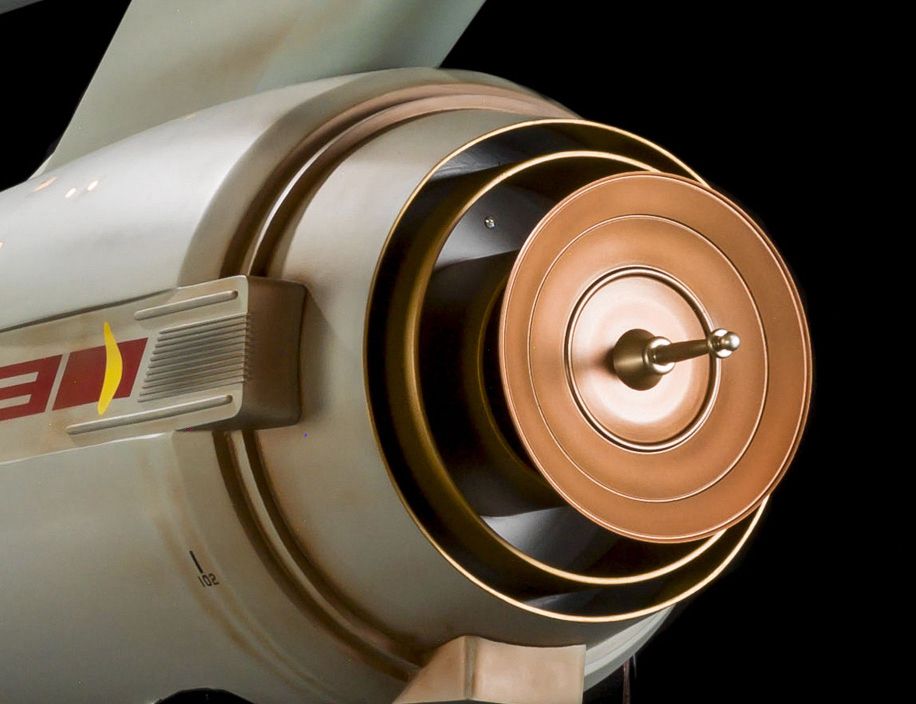
The deflector dish on the Starship Enterprise NCC-1701.
It may not be the deflector dish on the Starship Enterprise, but antenna dish Deep Space Station 46 helped humans go where no one has gone before. #DSS46 📡
Happy #StarTrekDay 🖖
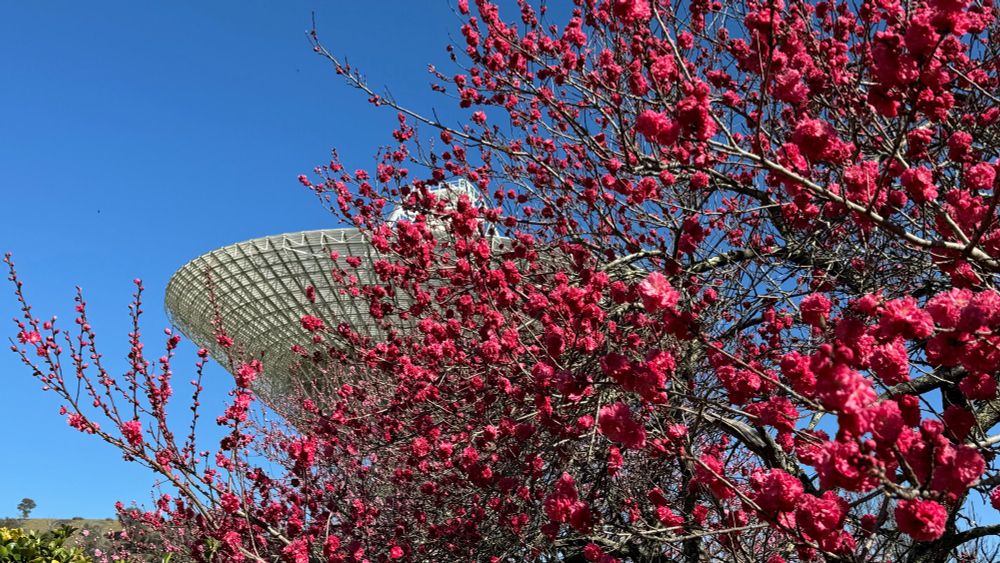
Deep pink flowers blooming with a giant antenna dish on the background against a blue sky.
Spring has sprung. 🌺📡
04.09.2024 10:36 — 👍 39 🔁 5 💬 0 📌 0
Honoured to have NASA’s Deputy Associate Administrator for Space Communications and Navigation, Kevin Coggins visit us @CanberraDSN to speak with staff and local students about the important role of the Deep Space Network which marks 60 years of operations. 📡

NASA SCaN’s Kevin Coggins speaking at the event marking the 60th anniversary of the Deep Space Network.

@CanberraDSN Director, Kevin Ferguson presents a commemorative plaque to NASA SCaN’s Kevin Coggins. The 70-metre antenna, Deep Space Station 43 is in the background as it communicates with the Voyager 2 spacecraft.
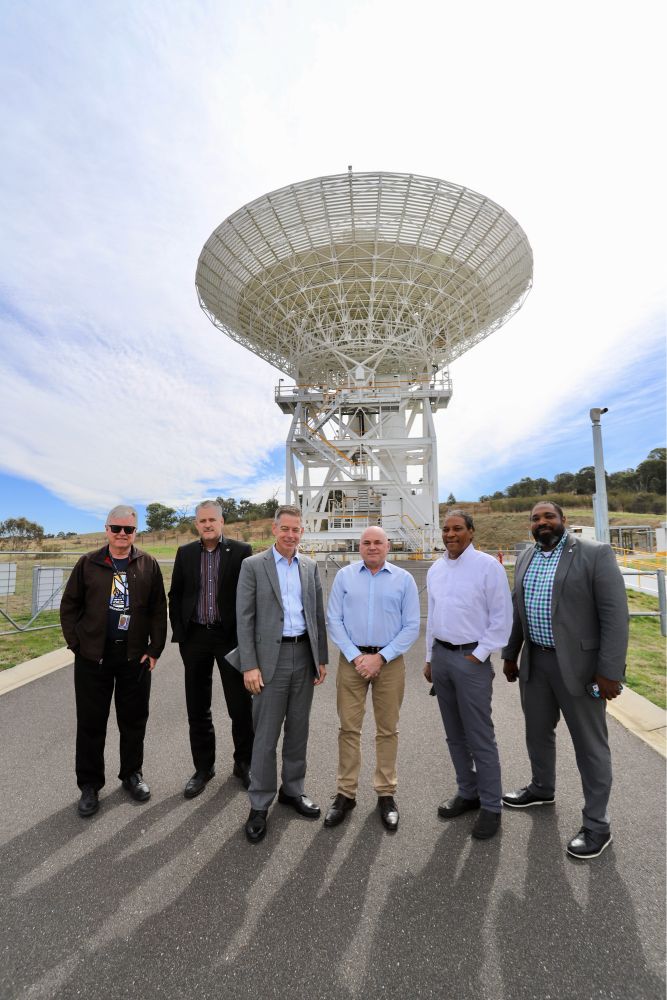
Standing in front of the 34-metre antenna, Deep Space Station 36 are (left to right), Kevin Knights (CDSCC), Greg Mann (NASA), Kevin Coggins (NASA), Kevin Ferguson (CDSCC), Marcus Watkins (NASA) and Philip Baldwin (NASA).
Honoured to have NASA’s Deputy Associate Administrator for Space Communications and Navigation, Kevin Coggins visit us @CanberraDSN to speak with staff and local students about the important role of the Deep Space Network which marks 60 years of operations. 📡
28.08.2024 04:46 — 👍 16 🔁 4 💬 0 📌 0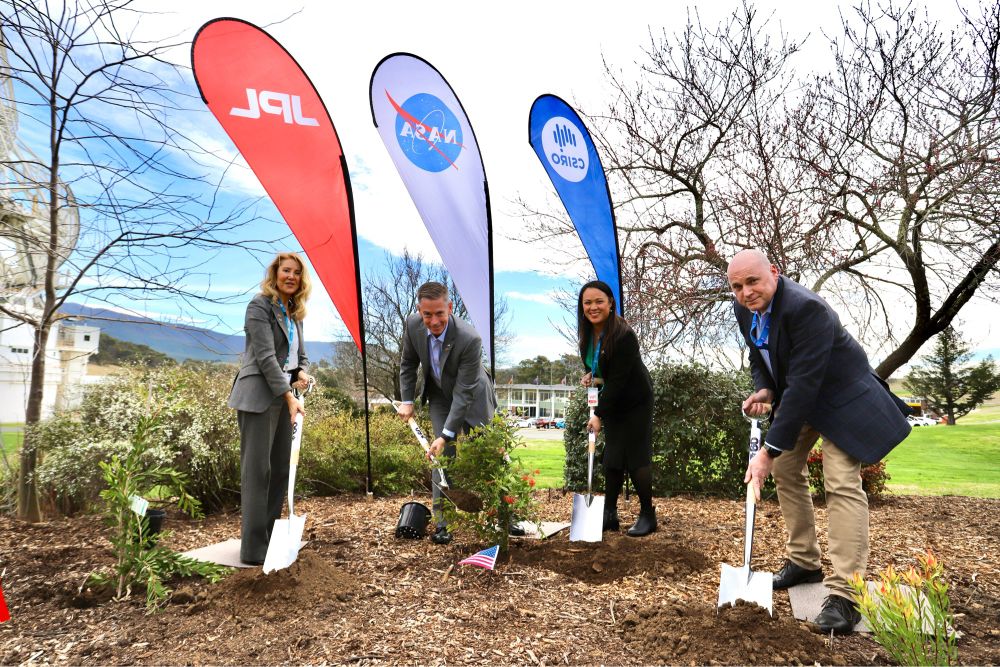
Left to right: Ms Montserrat Momán Pampillo – Chargé d’Affaires, Spanish Embassy in Canberra; Mr Kevin Coggins – Deputy Associate Administrator, Space Communications and Navigation (SCaN); Ms Vanna Lavery – acting Economics Counsellor; and Mr Kevin Ferguson – Director, CSIRO Canberra Deep Space Communication Complex plant three native plants during the 60th anniversary celebrations for the Deep Space Network.
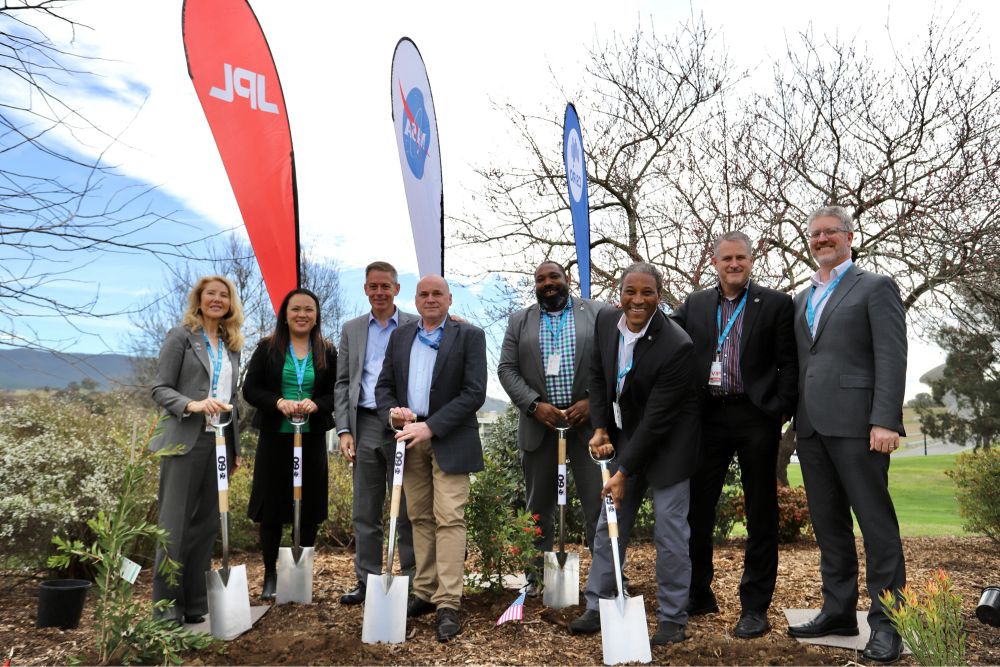
left to right: • Ms Montserrat Momán Pampillo – Chargé d’Affaires, Spanish Embassy in Canberra • Ms Vanna Lavery – acting Economics Counsellor • Mr Kevin Coggins – Deputy Associate Administrator, Space Communications and Navigation (SCaN) • Mr Kevin Ferguson – Director, CSIRO Canberra Deep Space Communication Complex • Mr Philip Baldwin – Deputy Program Manager, SCaN • Mr Marcus Watkins – Director for Overseas Operations, SCaN • Mr Greg Mann – NASA Office of International and Interagency Relations (OIIR) • Mr Chris Hewitt, Australian Space Agency US Embassy
To celebrate the 60th anniversary of the Deep Space Network, our guests from the Spanish and US Embassies, NASA and Australia planted three native plants as a symbol of each DSN station, as we grow together into the future.📡🇦🇺🇺🇸🇪🇸🌿
28.08.2024 04:43 — 👍 14 🔁 2 💬 0 📌 0
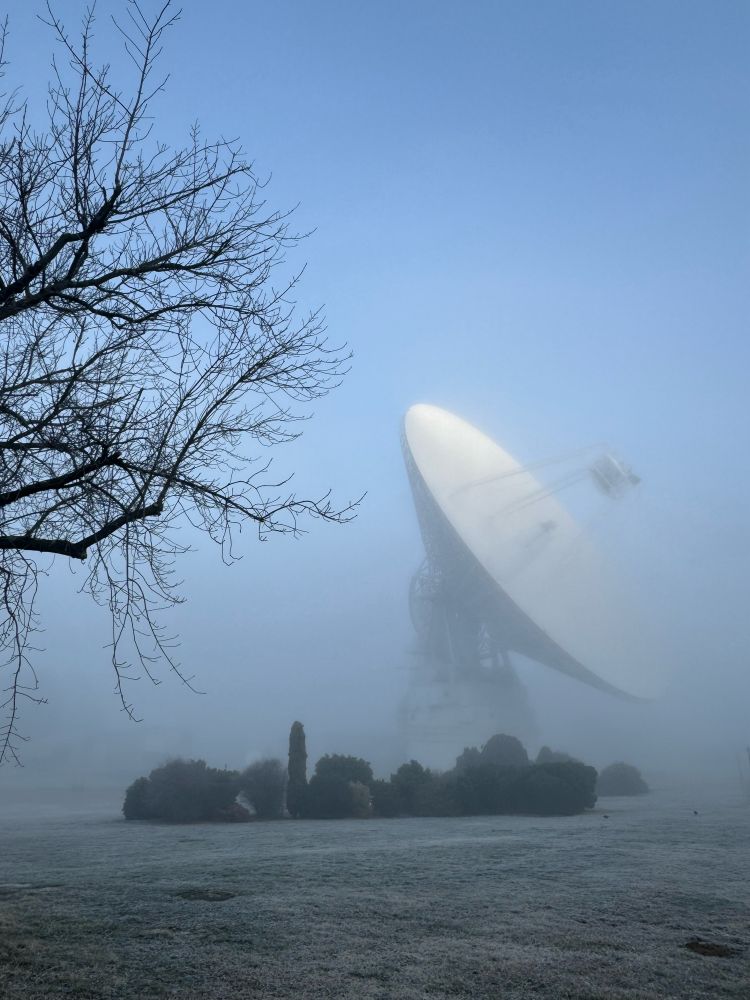


On a foggy morning @CanberraDSN, Deep Space Station 43, standing about 73-metres above the valley floor, catches the first rays of sunlight.
A fog bow formed as well, adding to the winter scene. -2°C to start the day.
#DSS43 📡😶🌫️🌈


Some very nice by lenticular clouds around this afternoon.📡
As stable moist air flows over the mountain ranges, cooler temperatures cause it to condense into large scale standing waves forming the layered clouds.

Hoping for a #selfie but we were just off camera when #GOESU deployed from the #FalconHeavy second stage rocket.
Comparison image from the #Himarwari8 satellite and the NASA broadcast.
Great job by our team today, providing comms for this phase of the mission. #DSS36
🌏📡〰️〰️🛰️